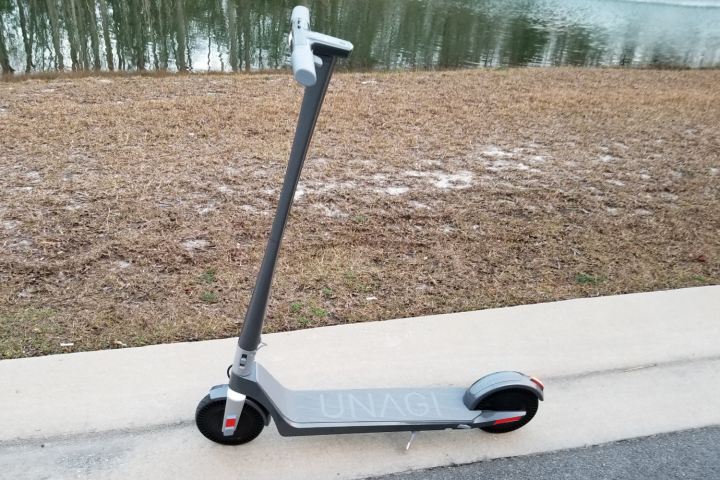
You land the big tech job, you move to a big city. But it turns out that rent is expensive. And parking spots cost significantly extra now? It’s a little much for your four block commute. If this situation rings a bell, you should consider the Unagi E500 Electric Scooter for your commute. It’s usually leasable for $59 a month, but right now you can get your first month for $19, saving you $40 and giving you a good chance to check the machine out on the cheap. It comes with free servicing and insurance, too, so all you need to “pay” extra is the electricity cost to charge it. Once your trial is over, you’ll go back to $59 per month while you’re sill leasing the scooter, but we’re seeing some customer reports of getting this $19/month deal extending up to 3 months after talking with the company. Tap the button below to check it out.
Why you should lease a Unagi E500 Electric Scooter
The Unagi E500 is a sleek, folding scooter that weighs just 28.5 pounds, making it convenient to use anywhere and store beside your desk at work or school. Its tires are rubber, not the hard plastic that might’ve put you off of this style of scooter back in the early 2000’s. Much like the plastic ones, however, these tires are puncture-proof, made solid with small air pockets throughout. And, again, if there is an issue, Unagi has servicing of the scooter covered under your deal.
But how does such a bike feel to ride? We got one of our tech reviewers off the computer and onto a scooter for a Unagi E500 review. He appreciated its ability to quickly ramp up to 13 to 14 mph and, then, gradually rise to a max of about 17 mph. Both braking and accelerating controls felt smooth and safe to operate, essential when confronted with a clueless car suddenly lunging in front of you or any one of a million other urban obstacles. And that’s what this is, a great urban ride that’s designed around getting high-functionality over style.
To grab one for yourself now, just tap the button below. You’ll be able to get a Unagi E500 in your hands for just $19, which is $40 less than the normal monthly rental of $59. After your initial experience with the bike, your price will go back to $59, but you can cancel at any time.
Editors' Recommendations
- Best electric car charger deals: $100 off home charging stations
- The best October Prime Day electric scooter deals happening now
- The best electric cars you can buy in 2023




